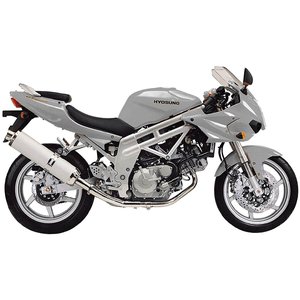Hyosung GT 650 S [2005-2011]: The Underdog Sport Tourer That Deserves a Second Look
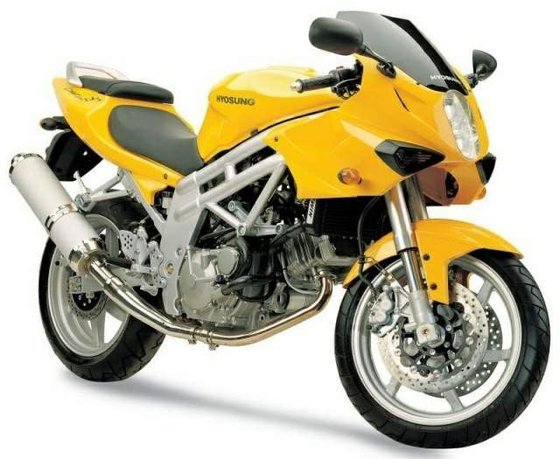
Introduction
When South Korea’s Hyosung introduced the GT 650 S in 2005, it wasn’t just launching another motorcycle—it was making a statement. Positioned as an affordable alternative to Japanese middleweight twins, this V2-powered sport tourer aimed to blend practicality with a dash of sporty character. After spending a week with a well-maintained 2008 model, it’s clear the GT 650 S isn’t just a budget oddity—it’s a machine that rewards riders willing to look past its underdog status.
The GT 650 S feels like a time capsule of Korea’s automotive ambition. With its 647cc engine (39.5 cu-in) and upright ergonomics, it targets riders who want Suzuki SV650 versatility without the premium price tag. But does it hold up as a used buy today? Let’s throttle into the details.
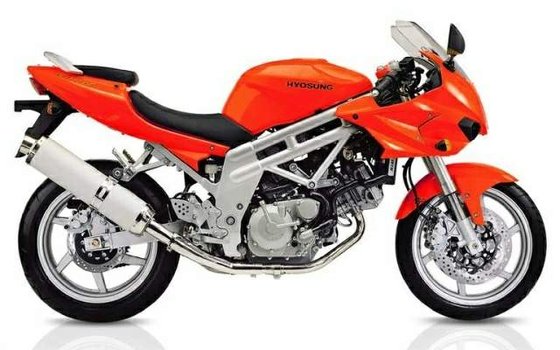
Engine Performance: Smooth Operator with a V-Twin Soul
At the heart of the GT 650 S lies its liquid-cooled 90° V-twin—a design that immediately draws comparisons to Suzuki’s SV650. The 81.5mm bore and 62mm stroke (3.2 x 2.4 inches) deliver a broad torque curve, with 68 Nm (50.2 lb-ft) peaking at 7,250 RPM. On the road, this translates to effortless roll-on acceleration from 4,000 RPM upward.
Hyosung made a significant upgrade in 2009 by switching from carburetors to fuel injection. The FI models (2009-2011) offer crisper throttle response, especially noticeable when blipping downshifts. Regardless of year, the engine remains silky smooth up to its 9,250 RPM power peak (79 HP / 57.7 kW). Cruising at 120 km/h (75 mph) in sixth gear sits the tach at a relaxed 5,200 RPM—a testament to its tall gearing.
The exhaust note deserves special mention. Unlike the muted thrum of Japanese counterparts, the GT 650 S’s 2-into-1 system delivers a throaty growl that turns heads without crossing into obnoxious territory.
Chassis & Handling: Confidence Inspirer with Quirks
Hyosung’s steel oval-tube frame provides a rigid foundation, complemented by 41mm USD forks (380ml oil capacity) and a preload-adjustable rear monoshock. The setup leans toward comfort—perfect for absorbing potholes on urban commutes—yet remains composed during spirited cornering.
At 208 kg (459 lbs) wet, the GT 650 S isn’t class-lightweight, but its mass centralization makes it feel nimble. The 1,435mm (56.5") wheelbase and 25° rake strike a balance between stability and agility. However, the wide handlebars require deliberate input for quick direction changes—it’s no supersport flicker, but that’s not its purpose.
Ground clearance stands at 130-185mm (5.1-7.3") depending on model year, allowing decent lean angles before peg scraping becomes an issue. The ZR17 Metzeler tires (120/60 front, 160/60 rear) offer predictable grip, though upgrading to modern rubber transforms cornering confidence.
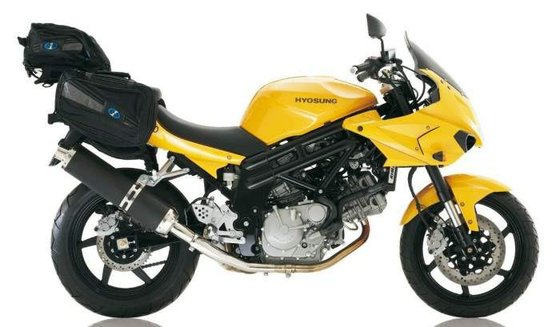
Braking System: The Achilles’ Heel
Here’s where the GT 650 S shows its age. Early models (2005-2008) suffer from wooden front brake feel despite using twin 300mm discs. The initial bite is underwhelming, requiring a firm two-finger squeeze. Later FI versions improved pad compound, but enthusiasts will still want to:
- Upgrade to sintered pads
- Replace brake lines with steel-braided hoses
- Flush fluid with high-temperature DOT 4
The rear 230mm disc performs adequately for speed modulation but lacks progression. It’s a system that works fine for casual riding but demands upgrades for aggressive use.
Ergonomics & Comfort
With a 780mm (30.7") seat height, the GT 650 S welcomes shorter riders without sacrificing legroom. The stepped seat provides decent lower-back support, though the foam softens noticeably after an hour. The semi-upright riding position—pegs slightly rear-set, bars at shoulder height—proves versatile for both city crawling and highway touring.
Wind protection varies by model:
- 2005-2008: Minimal flyscreen
- 2009-2011 FI: Larger touring screen (reduces chest buffeting at 110+ km/h / 68+ mph)
The 17L (4.5-gallon) tank delivers a 280-320 km (174-199 mi) range, depending on riding style.
Instrumentation & Features
Hyosung’s Vacuum Fluorescent Display (VFD) dash was revolutionary for its price bracket. The blue-lit digital speedo and analog tach combo remains legible at night but washes out in direct sunlight. Quirks include:
- Tiny turn signal indicators
- No gear position display
- Basic trip computer
Practical touches abound, though:
- 4-way adjustable rearsets
- Center stand provision
- Tool-free seat removal
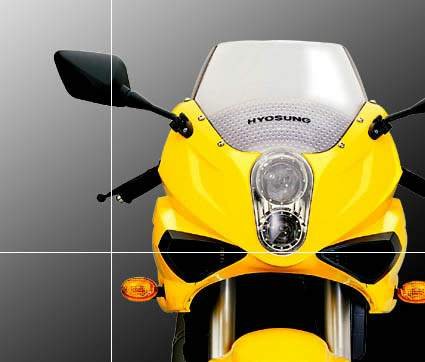
Competition: How It Stacks Up
1. Suzuki SV650 (1999-2009)
- Pros: Lighter (198 kg / 437 lbs), superior aftermarket, legendary reliability
- Cons: Less wind protection, buzzy engine at high RPM
- Verdict: The SV650 is the better motorcycle, but the Hyosung undercuts it by 20-30% on the used market.
2. Kawasaki Ninja 650R (2006-2011)
- Pros: Parallel twin smoothness, full fairing, sharper styling
- Cons: Bland exhaust note, higher seat (785mm / 30.9")
- Verdict: The Ninja appeals to sportier riders, while the GT 650 S suits those prioritizing low-end torque.
3. Honda NT650V Deauville (1998-2005)
- Pros: Shaft drive, integrated luggage, Honda build quality
- Cons: Heavier (229 kg / 505 lbs), anemic 57 HP engine
- Verdict: The Deauville is more touring-focused but feels dated compared to the Hyosung’s sporty edge.
Maintenance: Keeping the Korean Twin Thriving
Key Service Intervals
- Oil Changes: Every 5,000 km (3,100 mi) with 10W-40 semi-synthetic (3.2L with filter)
- Valve Clearances: Check every 12,000 km (7,456 mi)
- Intake: 0.1-0.2mm (0.004-0.008")
- Exhaust: 0.2-0.3mm (0.008-0.012")
- Coolant: Replace every 2 years (1.6L of ethylene glycol)
- Spark Plugs: NGK CR8E every 15,000 km (9,320 mi)
Common Issues & Upgrades
- Stator Failures: Upgrade to MOSFET regulator-rectifier
- Clutch Cable Stiction: Lubricate monthly or install hydraulic conversion kit
- Chain Maintenance: Use 525-series chains with regular cleaning (every 500 km / 310 mi)
MOTOPARTS.store Recommendations
- Brake Upgrade Kit: EBC FA408HH pads + Galfer SS lines
- Comfort Seat: Airhawk Cruiser R cushion for long rides
- Performance Exhaust: Delkevic 350mm Slip-On (retains DB killer)
- Lighting: LED headlight bulb conversion (H4 60/55W equivalent)
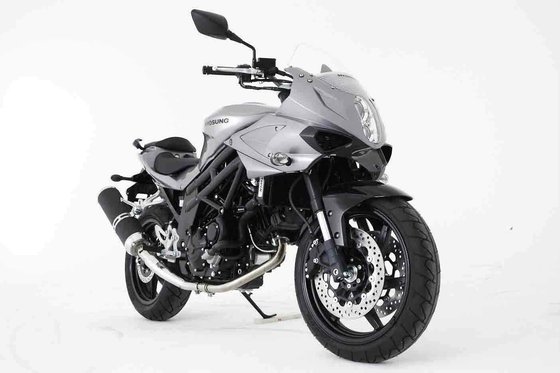
Conclusion: A Diamond in the Rough
The Hyosung GT 650 S won’t dethrone its Japanese rivals in outright refinement, but it carves its niche as a value-packed all-rounder. For riders who enjoy DIY projects and aftermarket customization, it’s a canvas waiting for personal touches. The visceral V-twin pulse, combined with touring-ready ergonomics, makes it ideal for:
- Daily commuters wanting character
- Budget-conscious tourers
- Garage tinkerers seeking a mod-friendly base
While parts support isn’t as robust as mainstream brands, MOTOPARTS.store bridges the gap with OE-spec and upgraded components. Test ride one with an open mind—you might just discover why this Korean contender developed a cult following.
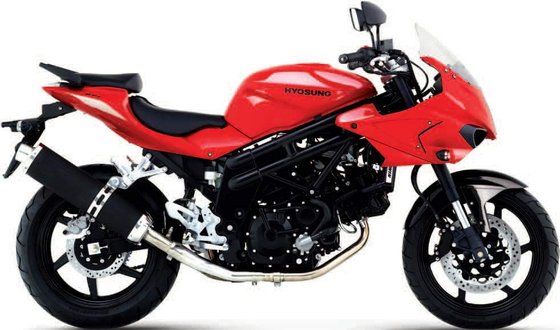
Specifications sheet
| Engine | |
|---|---|
| Stroke: | Four-stroke |
| Max power: | 58 kW | 78.0 hp |
| Max torque: | 68 Nm |
| Fuel system: | Carburetor (38 mm) (2005-2008), Electronic Fuel Injection (2009-2011) |
| Max power @: | 9000 rpm |
| Displacement: | 647 ccm |
| Max torque @: | 7500 rpm |
| Bore x stroke: | 81.5 x 62 mm (3.2 x 2.4 in) |
| Configuration: | V |
| Cooling system: | Liquid-cooled |
| Compression ratio: | 11.4:1 |
| Number of cylinders: | 2 |
| Valves per cylinder: | 4 |
| Dimensions | |
|---|---|
| Wheelbase: | 1435 mm (56.5 in) |
| Dry weight: | 195 |
| Wet weight: | 210 |
| Seat height: | 780–831 mm (30.7–32.7 in) |
| Overall width: | 655–785 mm (25.8–30.9 in) |
| Overall height: | 1059–1125 mm (41.7–44.3 in) |
| Overall length: | 2060–2090 mm (81.1–82.3 in) |
| Ground clearance: | 130–185 mm (5.1–7.3 in) |
| Fuel tank capacity: | 17 L (4.5 US gal) |
| Reserve fuel capacity: | 2 L (0.53 US gal) |
| Drivetrain | |
|---|---|
| Chain type: | 525 |
| Final drive: | chain |
| Chain length: | 118 |
| Transmission: | 6-speed, cable-operated wet clutch |
| Rear sprocket: | 47 |
| Front sprocket: | 15 |
| Maintenance | |
|---|---|
| Engine oil: | 10W40 |
| Brake fluid: | DOT 4 |
| Spark plugs: | NGK CR8E or NGK CR8EIX |
| Spark plug gap: | 0.7 |
| Coolant capacity: | 1.6 |
| Forks oil capacity: | 0.76 |
| Engine oil capacity: | 3.2 |
| Engine oil change interval: | Every 5000 km or 2 years |
| Valve clearance (intake, cold): | 0.10–0.20 mm |
| Valve clearance check interval: | 24,000 km / 15,000 mi |
| Valve clearance (exhaust, cold): | 0.20–0.30 mm |
| Recommended tire pressure (rear): | 2.5 bar (36 psi) solo, 2.8 bar (41 psi) with passenger |
| Recommended tire pressure (front): | 2.25 bar (33 psi) |
| Additional Info | |
|---|---|
| Ignition: | CDI |
| Color options: | Red, silver, yellow (varies by year) |
| Factory warranty: | 24 months (on some models) |
| Lubrication system: | Wet sump |
| Chassis and Suspension | |
|---|---|
| Rake: | 25.0° |
| Frame: | Steel double pipe |
| Trail: | 79 mm (3.1 in) |
| Rear tire: | 160/60-z-17 |
| Front tire: | 120/60-z-17 |
| Rear brakes: | Single 230 mm disc, 1-piston caliper |
| Front brakes: | 2 x 300 mm discs, 2-piston calipers |
| Rear suspension: | Swingarm with monoshock, adjustable preload |
| Front suspension: | 41mm inverted telescopic forks |
| Rear wheel travel: | 100 mm (3.9 in) |
| Front wheel travel: | 120 mm (4.7 in) |



